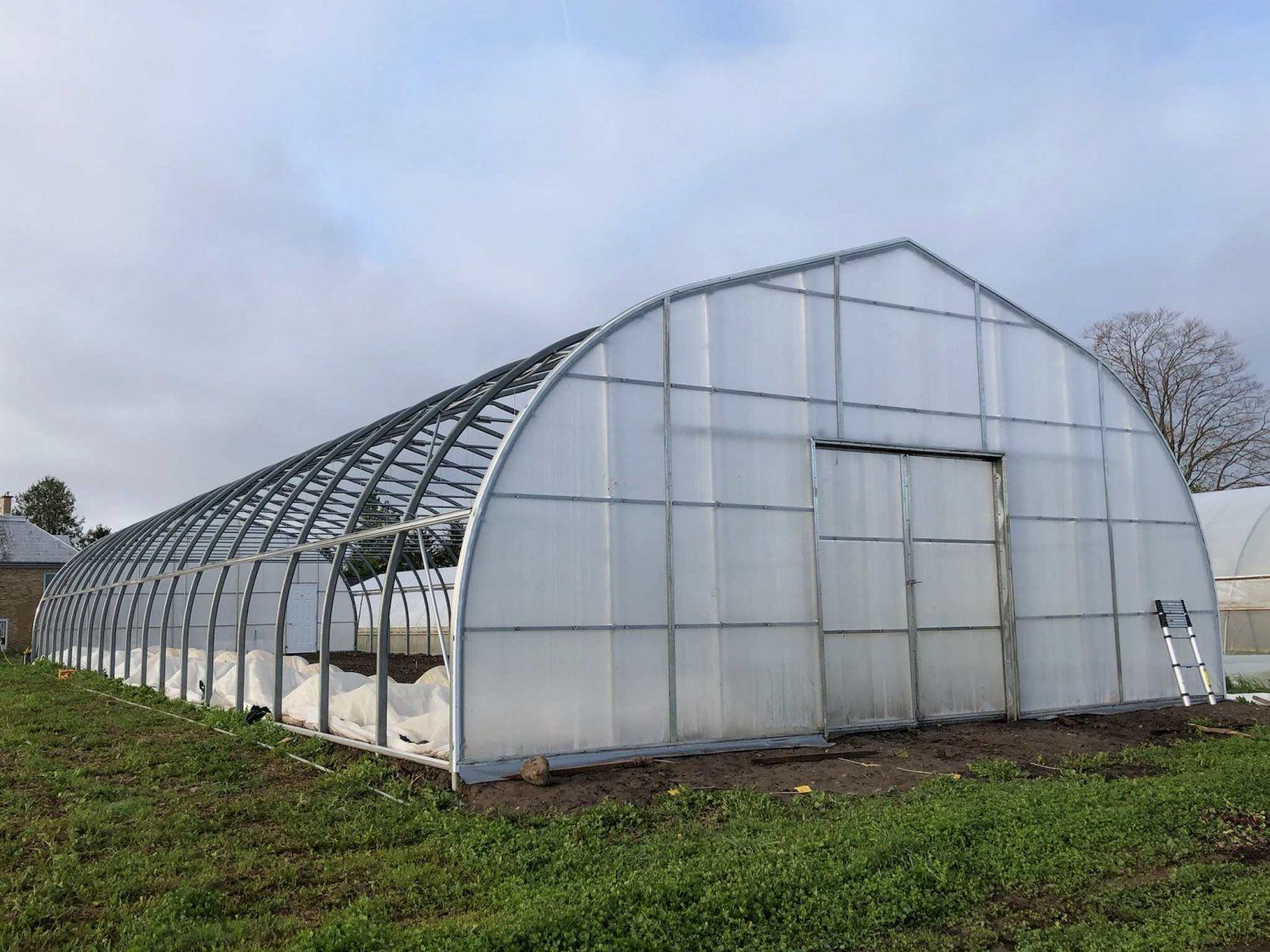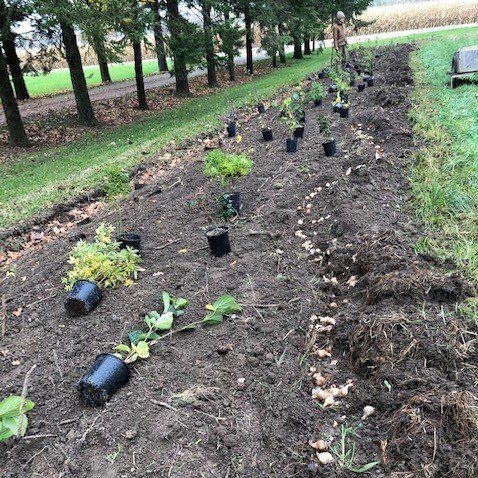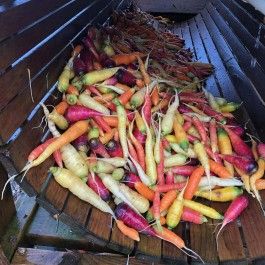November 4, 2021
The Lettuce Rejoice!
Firmly Rooted Farm's Newsletter for their Veggie Loving Farm-ily

We bring the rainbow to you!
On the Farm: The Need for Seed
Hello again my veggie loving friends,
The plastic is on the greenhouse! Our little baby greens and veggies will now be tucked away safely for the coming winter. Just in time too, as next week is threatening snow! How the days fly by. The last of the field vegetables are being pulled from the soil, including the seriously adorable rainbow carrots you can see in this week’s feature photo. The farm is being cleaned up, and the shrubs are being added to the hedgerows in time for dormancy. But of course, although things are winding down and being put to bed, the masterminds behind Firmly Rooted are teeming with ideas.
Ever the curious, Tamara and Brian hope to try their hands at seed saving next year. I once took a workshop on selective breeding and seed saving, and I can tell you, it’s no easy feat but it’s certainly a rewarding way to become closer with your food. It also used to be practiced with much greater necessity, but the world of seeds has transformed farming in the past one hundred years. There are still many at-home seed savers out there, dedicated to preserving the great biodiversity we once fostered amongst the food we ate.
Some seeds are easier to save than others. Peas, beans, tomatoes, and lettuce for example. Part of this is due to physical attributes: for example, peas and beans are simply big seeds and easy to harvest. But with lettuce, what makes it easy is that they are self-pollinating, meaning the genetics of the next generation are not at all unpredictable.
It would be lovely to save brassicas and cucurbits, but these plants cross-pollinate like crazy, so it’s difficult to estimate what the next generation will look like. Other plants like beets and chard simply require extra time. They bear seeds as perennials, meaning they need to remain in the field throughout the year until they flower in the spring. It’s likely that as Tamara and Brian enter into the wonderful world of seed saving, they’ll start with the simplest crops to save.
Seeds are a fascinating exploration of genetics. Gregor Mendel, a pioneer in modern genetics, carried out his experiments in selective breeding of the garden pea, making note of how some traits were dominant or recessive. Hybrid seed is another example of seed innovation, although with some controversy. Hybrid seed is created by crossing two different but individually inbred plants, resulting in something known as ‘hybrid vigour,’ where the advantageous characteristics of both parents become apparent in the offspring. However, this also results in very diverse genetics, meaning the following generation will not be the same as the first offspring. This has resulted in controversy, as it means farmers no longer can reliably save this seed. Also, the discovery of hybrid seeds launched the Green Revolution, paring high input agricultural practices with hybrid seed planting.
Genetically modified organisms are also a fascinating exploration of genetics, and highly controversial. They are created by introducing genetics into a plant from another organism. A commonly grown example is Bt cotton, common in textiles, created by introducing the bacteria Bacillus thuringiensis (Bt) into the plant genetics to make the plant have the ability to kill specific chewing pests. Bt itself is a commonly used pesticide and interestingly is approved for use in organic production systems because it is a biological and because it only effects creatures that feed on the crop plant. Even so we use it at Firmly Rooted only as a last resort.
Heirloom and open-pollinated seeds are also seed categories, but they are not the same things. They are both growing in popularity within the counter-movement to hybrids and GMOs. Heirloom varieties earn the name only if they have been passed on with stable genetics for at least 50 years, although many heirlooms we grow today are much older. An heirloom variety can be open-pollinated, but not all open-pollinated seeds are heirloom. To be open-pollinated, the seeds must be naturally pollinated by birds, wind, or insects. The seeds Tamara and Brian will be saving will be open-pollinated and might even be heirloom varieties, but of course, that depends on the age of the genetics within each variety.
I have a friend who once told me that ‘seeds are the answer to everything.’ He works for a small seed company, so seeds are close to his heart. I’m still figuring out the intricacies of what that statement means, but I do know this; seed saving affords farmers increased autonomy over their production systems, is an interesting practice, and a skill that must be preserved.
Kitchen Corner

Celery root or celeriac is a specific type of celery grown for its bulbous root system. It was first cultivated hundreds of years ago, earning special mention in the Iliad and the Odyssey! I love celery root roasted or mashed, combining a fresh celery flavour with earthy tones. The recipe I’ve shared with you can be simplified if you like, by boiling only celery root and potatoes together and adding garlic, butter, and milk for a creamy garlic mash. It's wonderful to enjoy with other roasted vegetables, or if you’re a meat-eater, it complements red meat nicely.
Enjoy! That’s all for now folks, happy eating until next time!
Farmer Erika




